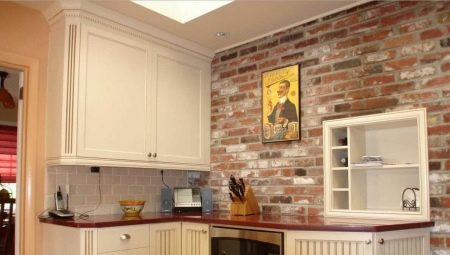For the interior decoration of residential premises - especially kitchens - today a large number of different materials are used. Among the popular options for surface finishing, it is worth highlighting the imitation of masonry, which can be done using different products for decoration.
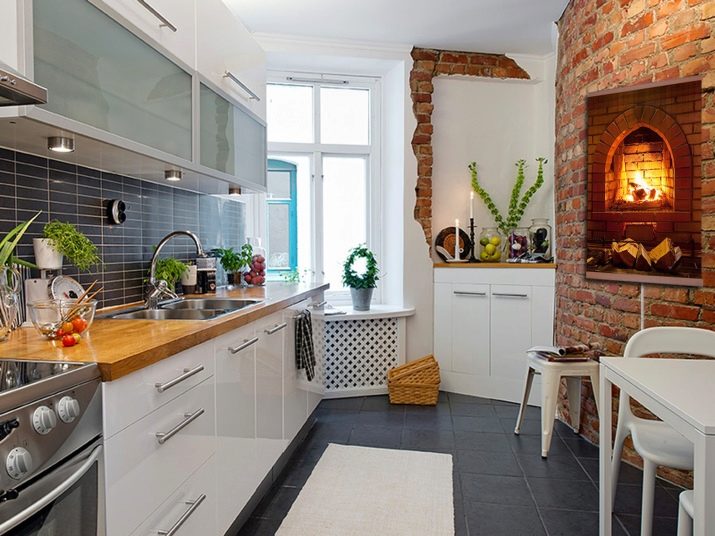

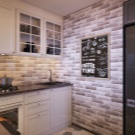
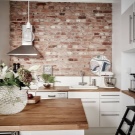
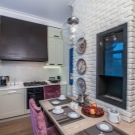
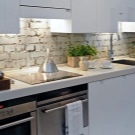
Advantages and disadvantages
Facing and finishing materials imitating the finish of artificial brick surfaces in the kitchen have positive and negative properties. So, the advantages of using such an interior decoration include a number of factors.
- By decorating the walls or other surfaces “under the brick” it will be possible to zone the space, conditionally dividing the functional and dining parts of the room, which will positively affect the atmosphere in the room.
- Decorative brick in the kitchen can act as a backdrop for a particular kitchen decor. Externally, this kind of decoration is in harmony with many objects in the interior.
- Thanks to the use of inexpensive brick finishes, it is possible to simply and quickly update the design of the kitchen.
- Surfaces with such a design are considered universal, because they are in perfect harmony with almost all stylistic directions, as well as the color scheme.
- Ceramic tile, which is most often used as a decorative brick, stands out for its environmental friendliness. In addition, products differ from many materials in a large operational resource.
- Wall murals imitating masonry are notable for their budget cost, in addition, the raw materials are easy to glue on the walls, and a room with this design takes on a stylish look.
- Plastic panels have a minimum weight, are presented in a large color and texture variety. Such a surface in the kitchen is quite easy to care for.
- Plaster, due to which it will be possible to create a brick finish, is in demand among consumers in light of easy installation, as well as the high decorative attractiveness of the resulting coating.
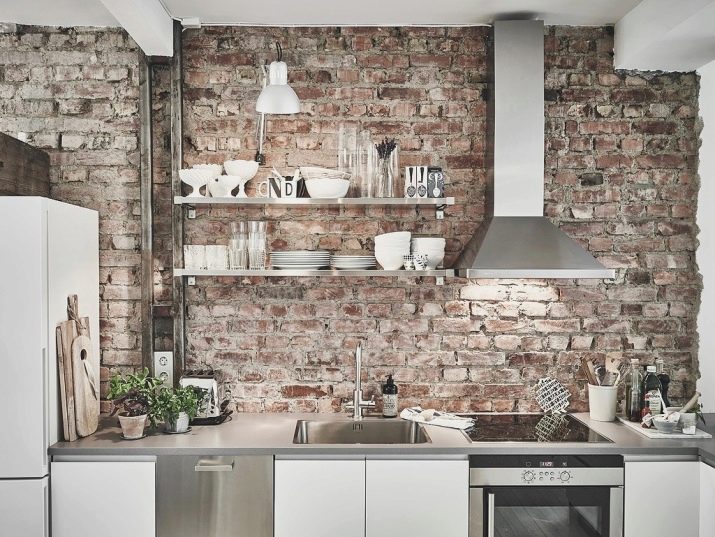
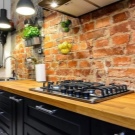
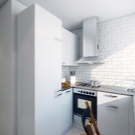
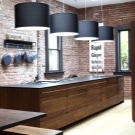
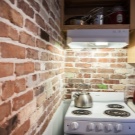
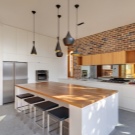
Among the minuses of the finish it is worth noting:
- laying tiles will require preparatory work regarding the alignment of the working surface;
- ceramic products are not particularly resistant to mechanical damage;
- in cases with plaster, the “brick-like” surface will need to be additionally polished and varnished, which entails additional expenses;
- The disadvantage of putty products is their low strength in light of the porous structure.

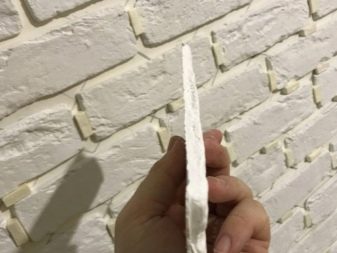
Species overview
Among a large number of finishing materials imitating decorative brick, it is worth highlighting the most popular.
Ceramic tile
Unlike ordinary bricks, the products will be two-dimensional, however, the tiles laid in any way on the wall will not lose their volume.
In the kitchen, most often they use white tiles or variations to the standard shade of brick.
In addition to a smooth surface, styling elements can have different effects on the front. Among the most commonly used variations, it is worth highlighting matte tiles, glossy, torn products.
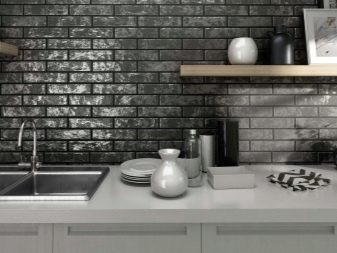
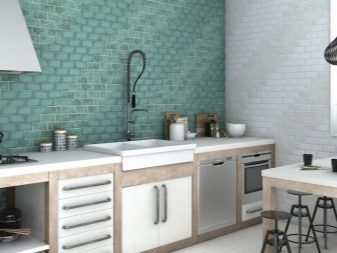
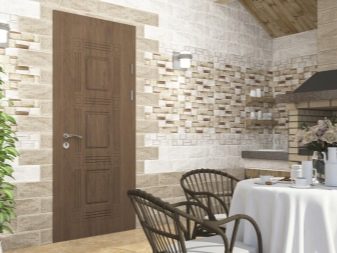
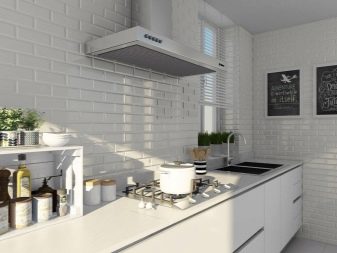
Tile "wild boar"
These products also repeat the shape of the facing brick, but only the spoon part. The thickness of the elements for decorative styling will be less than the previous type, however, this will positively affect the attractiveness of such a finish "under the brick." Products offered by modern manufacturers are distinguished by their color variety, and varieties with non-standard front-face design are especially popular.
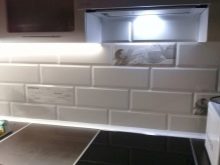
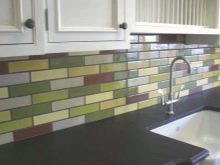
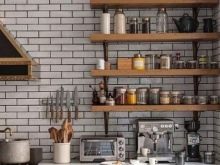
Porcelain tiles
Among all the available varieties of decorative bricks, it is the slabs that will have the most impressive weight. The raw materials for the manufacture of facing products are clay and a special polymer that provides adhesion between the constituent components.
In addition to the main ingredients of the composition, it is also worth noting granite chips. A positive feature of the product is moisture resistance, as well as a long service life.
Even the most persistent dirt is very easily removed from the surface of porcelain tiles, which will be relevant for rooms such as the kitchen. However, the laying of this type of decorative brick is possible only with a solid concrete base.
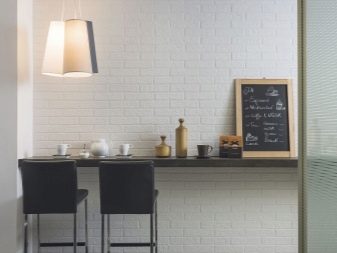
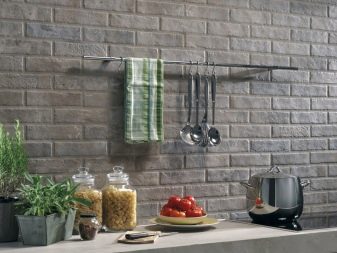

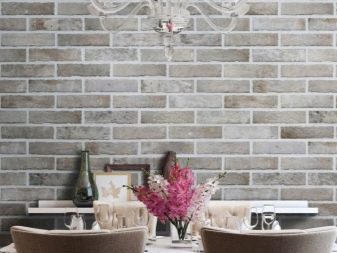
Putty
It will be possible to make the facing material “under the brick” with the help of gypsum putty. To decorate the wall with this option, you can use special forms, where the composition is poured to acquire the desired size and shape.
And also from raw materials it will be possible to make bricks manually.
Finished products are glued to the selected surface, then painted in the desired color, then additionally coated with a water-repellent composition. Typically, a polymer varnish or silicone compound is used for these purposes.
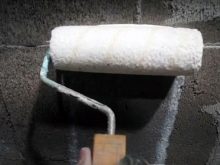
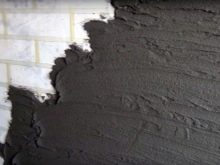
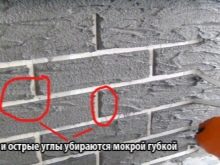
Brick tile
Durable products that differ from ceramic products in the way they are manufactured. Facing products of this category are easy to maintain, in addition, surfaces decorated with such a material will be resistant to various kinds of mechanical damage. Among the available assortment there are elements in various colors.
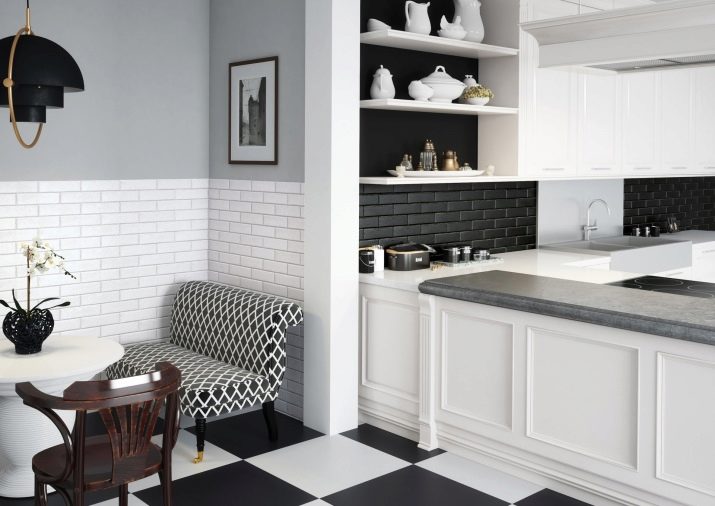
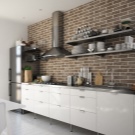
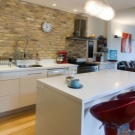
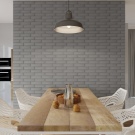
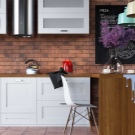
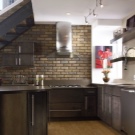
Products from MDF
The products do an excellent job of simulating a brick surface.
Material is allocated by budget cost.However, the installation process of such "bricks" will require some experience in the implementation of the work.

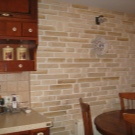
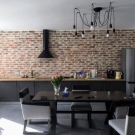
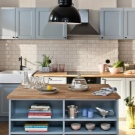
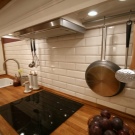
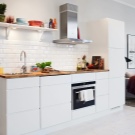
Plastic panels
Another affordable material with which you can recreate the look of brickwork on the wall.
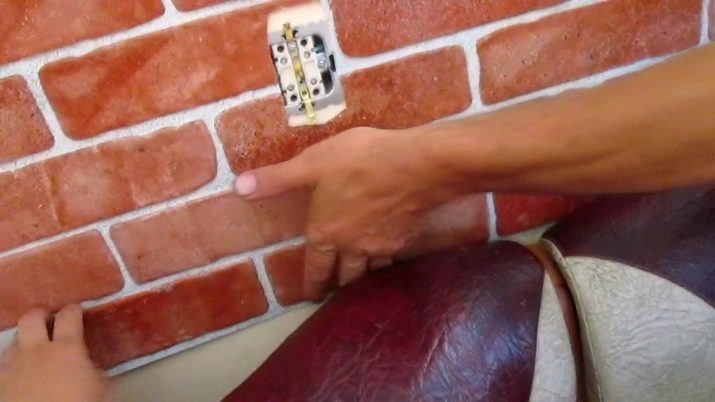
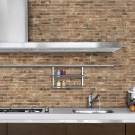
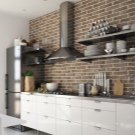
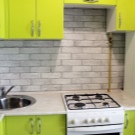
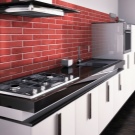
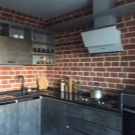
Vinyl and other varieties of wallpaper
It will be possible to replace expensive brickwork with washable wallpaper on which a brick-like pattern will be applied.

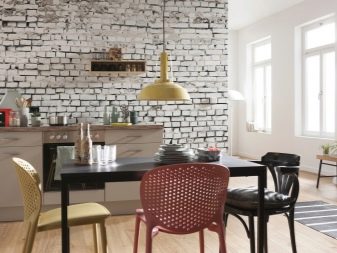
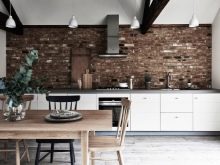

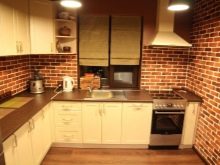
Design options
It is not customary to decorate a whole room with a brick finish, since an interior in a similar style will be similar to a warehouse deprived of comfort. Among the most relevant options for decorating surfaces in the kitchen with varieties of decorative bricks, there are several good ideas.

Room Zoning
An interesting technique is the arrangement of accents in the interior: imitation of masonry may be present in the kitchen working area on an apron or in variants where such decoration will cover the entire wall in the dining part. It will allow correctly implement the functional zoning of the kitchen space.

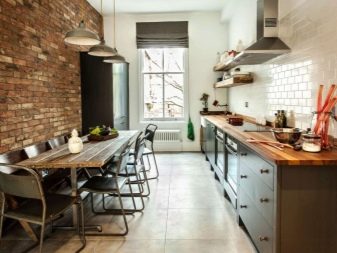
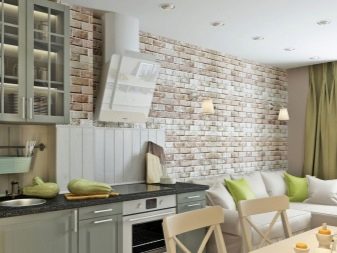
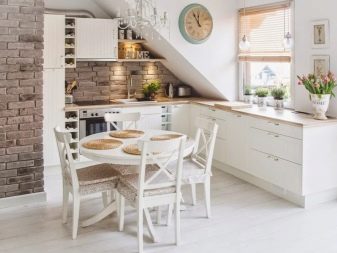
Creation of various designs or shapes
An idea that is relevant when combining a kitchen with a balcony, a living room and even a corridor. Facing the existing arches or the remains of the wall will turn the standard interior of the room into a creative design.
In this case, you can use materials of different colors, combining them so that the lined structure becomes a real decoration of the room.
The presence of one or more columns lined with brick-like materials will be an interesting internal architectural solution.
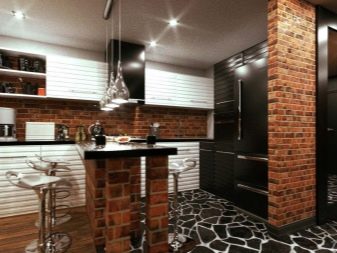
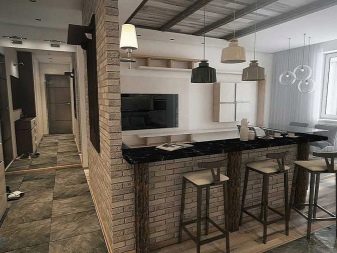
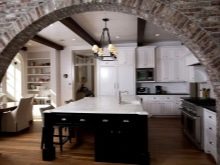
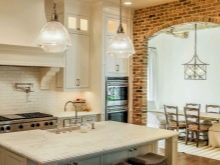
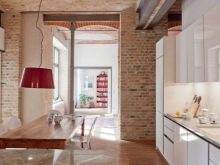
Facing window or doorways
A good option for using decorative brickwork may be facing areas around windows or doors in the room. Such an idea will require minimum investmentHowever, the result can exceed all expectations.
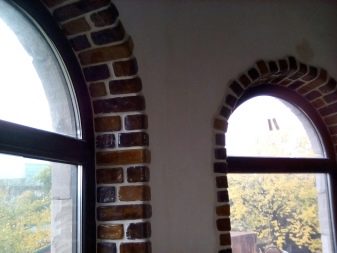
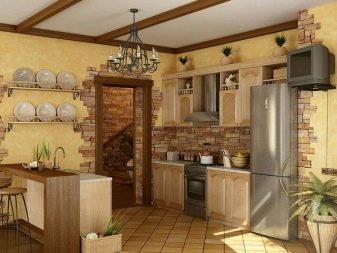
Arrangement of a false fireplace or hearth
The original version, which will be appropriate in most styles.
If there is free space in the kitchen, it will be possible to assemble an imitation of a fireplace, which will most advantageously look in a brick-lined form.
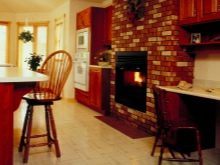
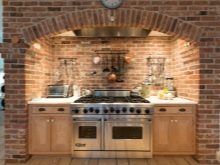
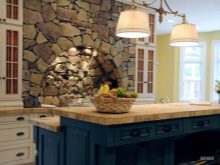
Ceiling finishes
A kitchen with decorative masonry does not have to have walls decorated in this way - most of the varieties of decorative bricks can be used on ceiling surfaces, but subject to high ceilings or the use of a light palette that will not visually make the room too low.
Such ideas for decorating surfaces in the kitchen are relevant in the following style decisions:
- loft;
- country style;
- minimalism;
- Gothic.

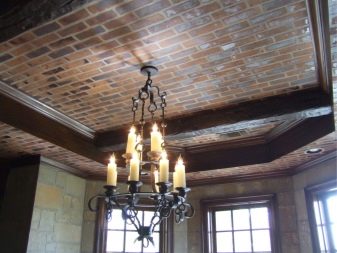
Recommendations
A popular design decision regarding the use of varieties of decorative bricks, requires compliance with some nuances of design.
- To emphasize the spaciousness and hygiene of the room, it is possible to use exactly white materials for styling. Such products will be in perfect harmony with the natural surfaces that are often present in the kitchen. It can be wood, metal countertops, decorative elements, furniture made of plastic or textile products.
- A good solution for too large a room will be the use of contrasting grout and light products that imitate brick. The implementation of such an idea will make the atmosphere in the kitchen more comfortable, while the brick walls will not seem empty.
- It is recommended to combine decorative masonry with walls painted in a single color scheme. To make the design look modern, it is best to add bright decor items to the interior.
- If there are several successful wall options in the kitchen, to decorate them with an imitation of masonry, it is best to give preference to the surface on which natural light from the window opening, balcony will get as much as possible.
- It is not recommended to do all the walls in this form, it will be enough to have one connecting surface between certain zones in the room.
- If the choice among the available materials fell on wallpaper, you should choose products that are characterized by high wear resistance.
- If for small kitchens there is a recommendation regarding the use of light varieties of “brick-like” materials, then for rooms that are not cramped in the area, you can safely use options from a dark color palette. Such shades will give the finish maximum naturalness.
- Considering the color gamut of materials, you can build on the stylistics of the design of the kitchen. So, in the loft style, the brown version of the items will be appropriate, the Scandinavian or rustic style goes well with white or gray masonry, the classic will require dark shades of blue or brown.
- To complement the interior with imitation of brick on the walls, it is worthwhile with suitable objects, for example, forged flower pots, clay pots, vivid paintings and others.
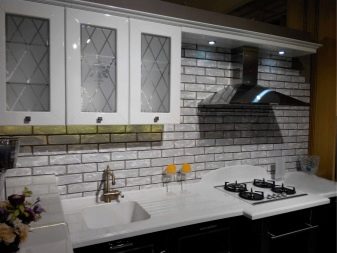
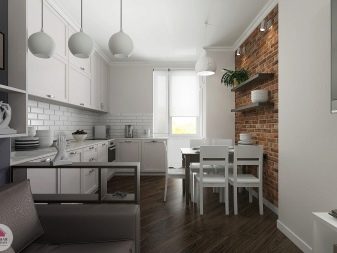
Beautiful examples
Imitation of masonry in the working area of the kitchen is a good option for zoning a spacious room with a prevailing light design. The kitchen in this version will be stylish, at the same time decorated functionally and simply.
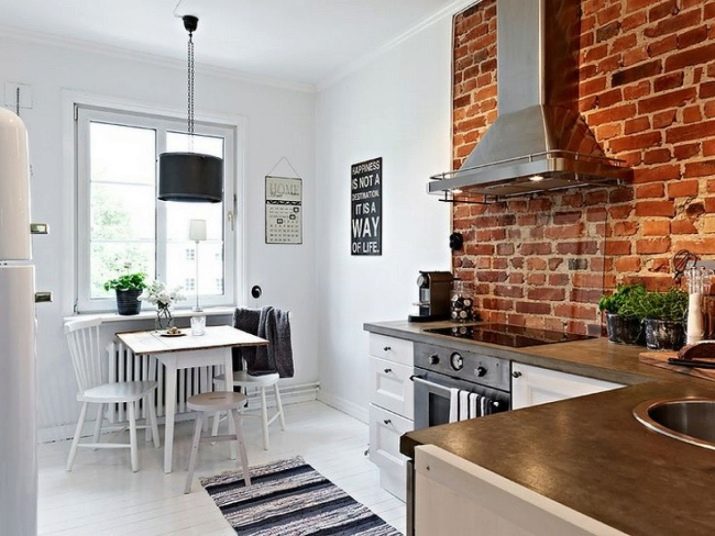
It is also possible to successfully use decorative masonry in the dining area, highlighting it in the apron area. The contrasting shades of the masonry will complement each other, uniting in a single style.
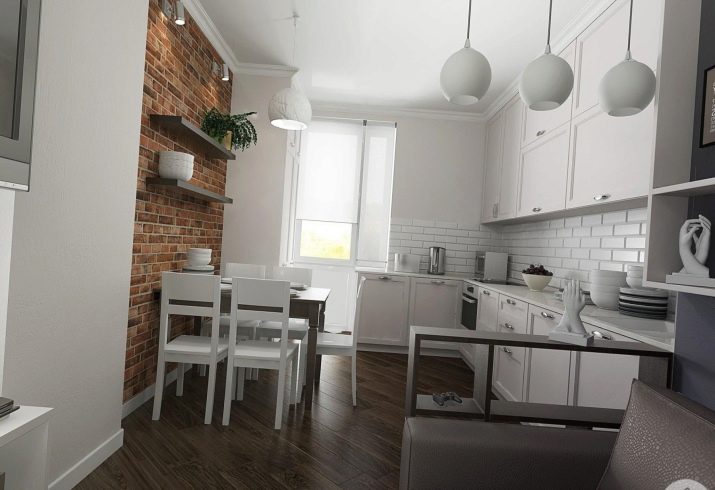
Decorative masonry is perfectly combined with other materials for decoration, so the design of the dining area with brick walls with floral inserts will be a good idea for a modern kitchen.
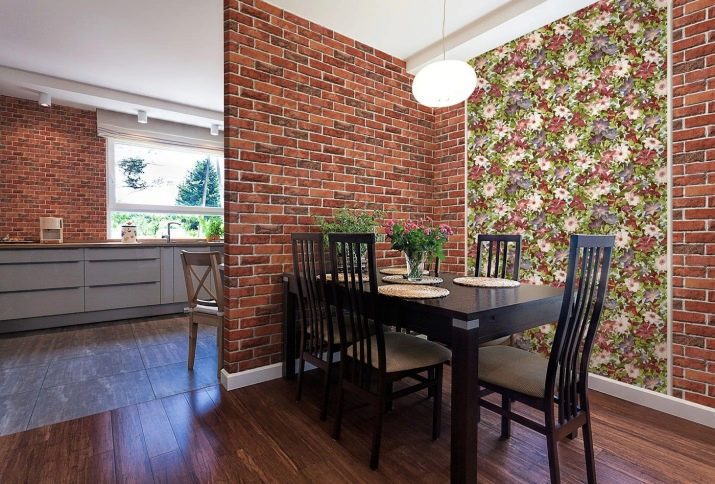
About the features of decorative bricks in the interior, see below.
